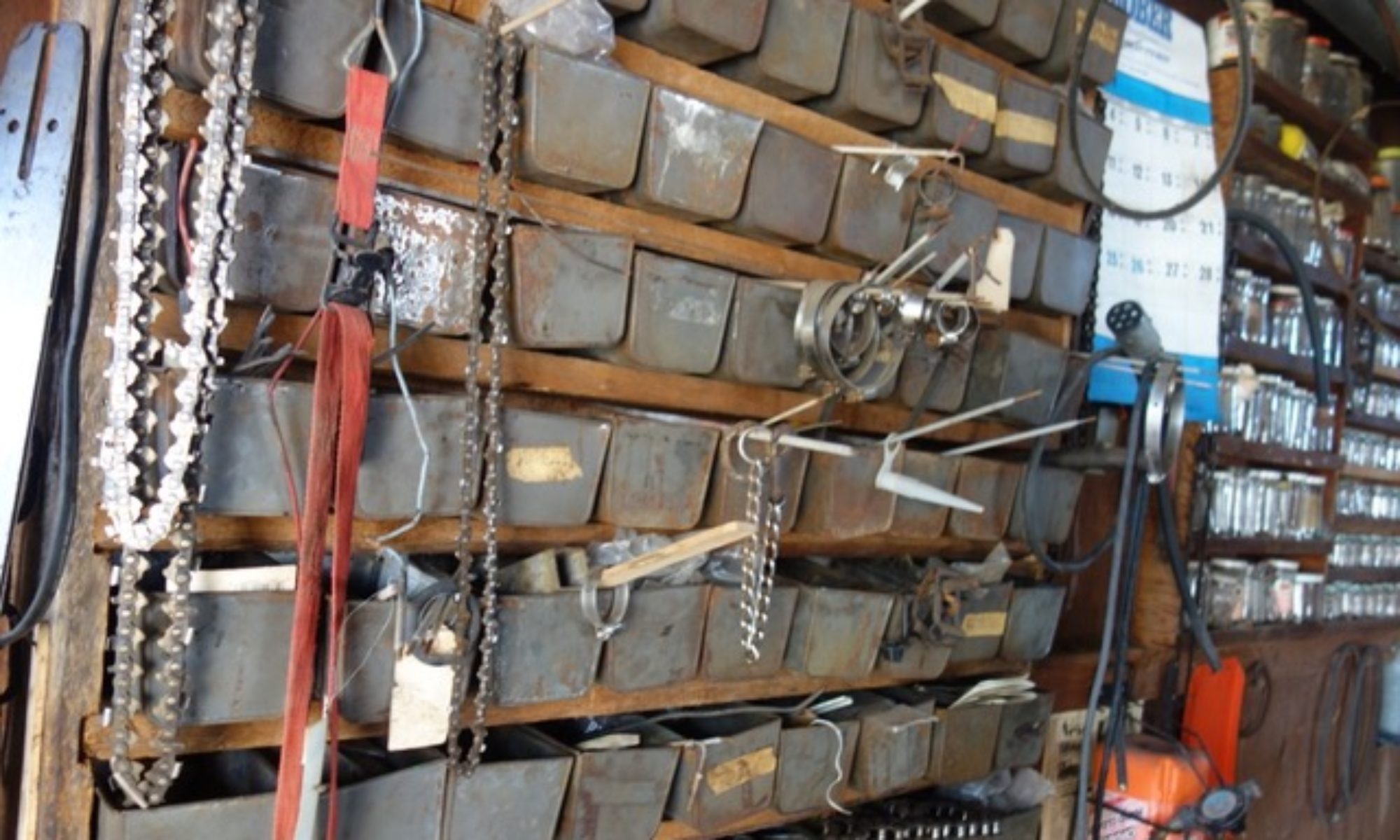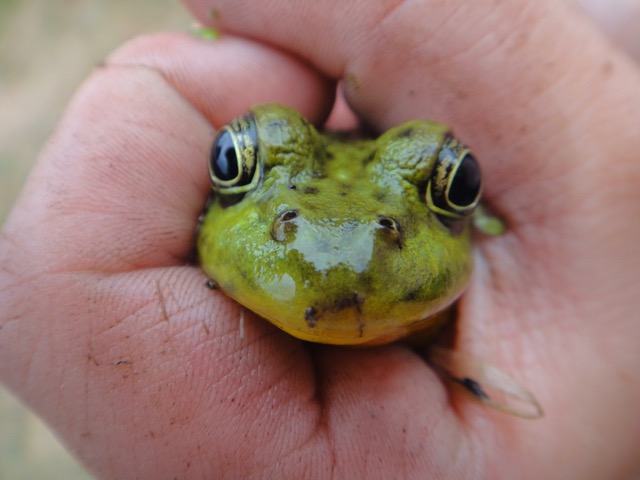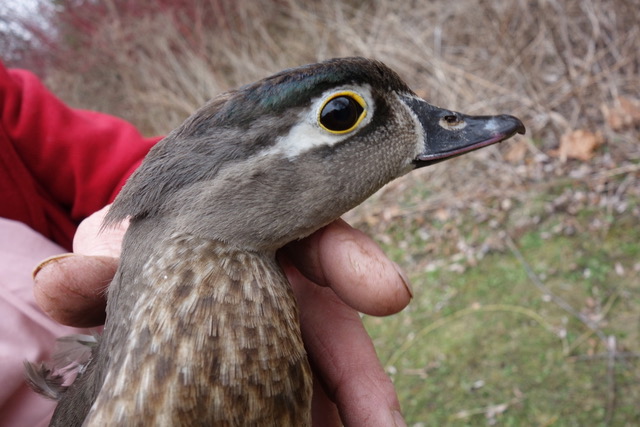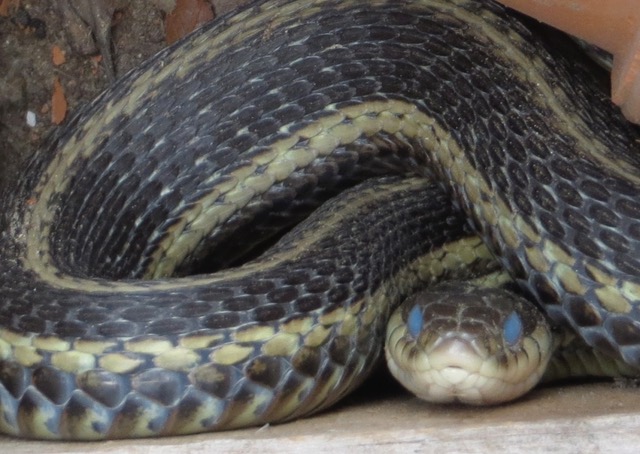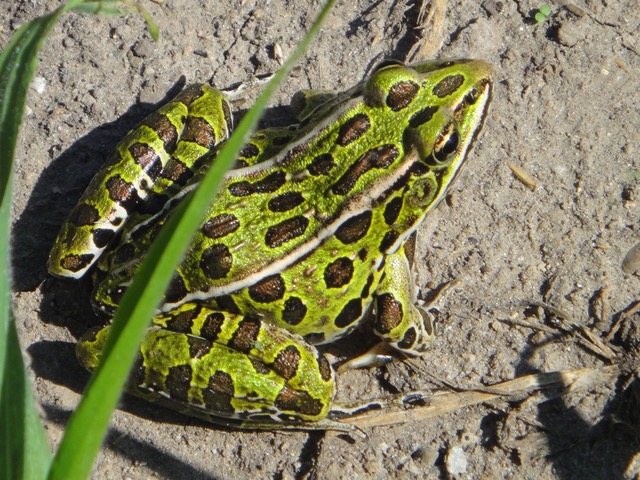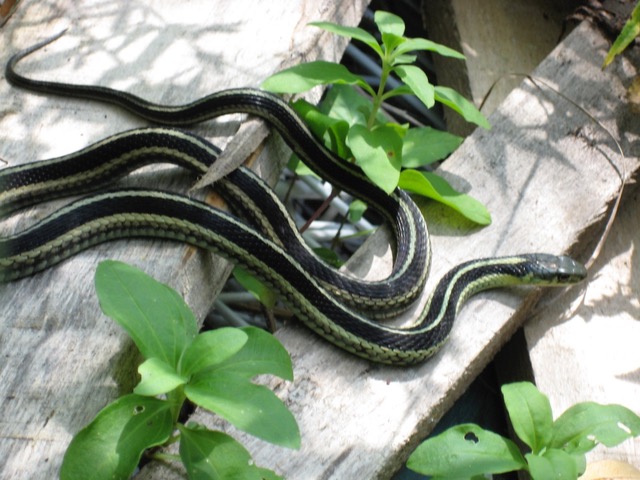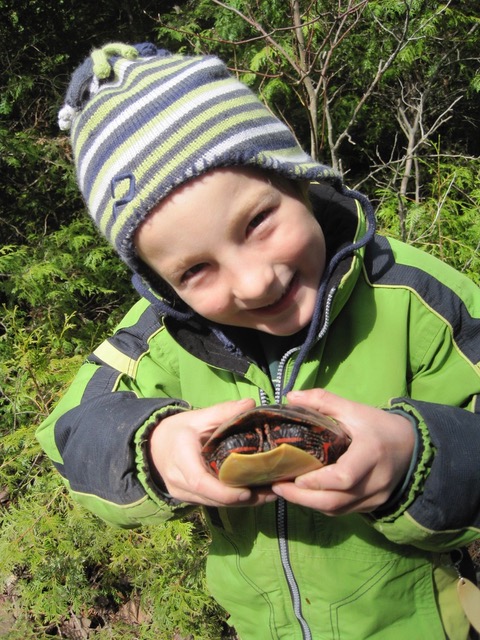THERE HAVE BEEN FIVE MASS EXTINCTIONS OF LIVING CREATURES ON EARTH
…MANY SCIENTISTS THINK WE ARE NOW IN THE MIDST OF THE SIXTH MASS EXTINCTION

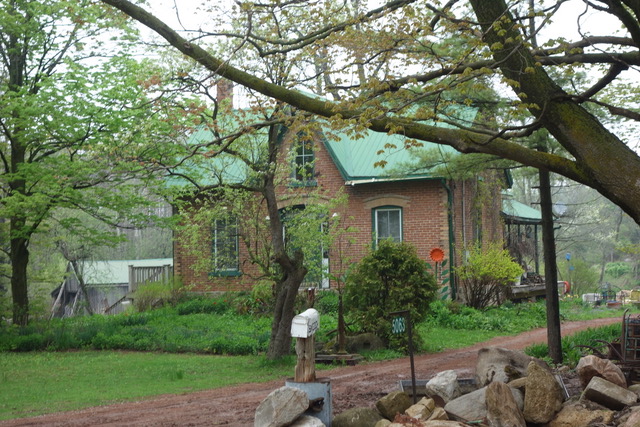
alan skeoch
June 2018
A strange thing happened in our farm pond around the year 1970. A remarkable event which has become a singular event.
A chilling event.
It was midsummer and the pond was thriving. Seemed that was the way things should be…the way things had been
for my lifetime. The painted turtles were breeding like crazy over on the east side of the 7 acre pond. Many resting like
nude sunbathers on floating logs and pieces of fence rails we there into the pond for that purpose. The big Snapping turtle
came out to breed as usual in the midsummer sun. Primeval and menacing to some observers. Intelligent and familiar
to us for she had been here long before we were even born. Her diet of the odd duckling was sad but the duck and goose
population was healthy. And wiggling through the aquatic life was a myriad of leeches whose diet was any of us with the
courage to swim in the pond and here I include muskrats, dogs and human beings. Easy to remove with a little salt.
Disturbing if yanked off for those leeches were able to inject some kind of anti-coagulant. When I pulled one off Marjorie’s
foot a thin stream of blood oozed forth for some time. Not deadly. But an illustration of the Darwinian world of
nature “red in tooth and claw”. The pond was alive with things as tiny as water siders and as big as the coyotes whe left their turds
of rabbit hair here and there just to let us know their presence.
In short the pond was normal….abounding in life.
But something was strange over at the western edge where the big pond drained to the smaller pond (Big Snappers home) and from thence
the water worked its way to the Speed River and eventually to the magnificent Great River. Everything made sense.
Except. I can see them in mind’s eye to this day. Something odd was happening to the frogs. There were so many of them.
Clustered at the pond exit drain there were so many juvenile leopard frogs that the pond water seemed to have been suddenly
consumed. Hundreds of them All about the same age. The recent crop that had hatched from the frog jelly in spring time.
I had never seen so many clustered at one spot. All looking directly at me. Not croaking…not scattering, no diving. They just
floated there looking at me.
Now we had always had a large frog population. Enough frogs to feed each other (they had a cannibal gene), to feed the snake population, and enough
to fill the bellies of the Great Blue herons who paid a regular visit with their stiletto beaks…spear fishing for frogs. Lots of frogs every year.
But never so many.
And the chilling part of this story is that there has never been another burst of frog life in the past fifty years.I know. We look each year at our frogs.
This year…this day…June 10, 2018…I have yet to see one single frog on the verge or in the water. And the pond is larger than it has ever been. A Glorious wetland
with no frogs.
In 1962, Rachel Carson predicted this was happening in her famous book Silent Spring. I read it back in 1962 and hoped and prayed that she was wrong.
Rachel said that the reason for the great dying of living creatures was caused by us…by the rampant post 1945 use of DDT.* (*Dichlorodiphenyltrichioroethane)
Invented in 1873 but put in widespread use as an insecticide in 1939 especially effective in controlling Malaria bearing mosquitoes Swiss chemist Paul Muller received the Nobel prize
for discovering that this human made chemical (i.e. not a natural chemical) was a great contact poison for insects. After WW 2, DDT became a household
pesticide that could be purchased with ease. While DDT killed mosquitos effectively it also worked up the food chain killing many creatures including
vast numbers of birds as Rachel Carson pointed out. In 1972 under the Stockholm Convention, DDT was banned. By that time the chemical had pushed the peregrine falcon near to extinction and devastated the blad eagles.
DDT was a killer let loose to disrupt the global food chain. Perhaps contributing to what some scientists call the SIXTH EXTINCTION.
There was no DDT in our ponds. No farm fields drained chemicals into the ponds which ar just below the height of land draining on one side
to the Grand River and on the others side to the Credit River. Our ponds are the source waters of two great rivers. No poisons. So it is hard to explain why our wetlands are so devoid of life today.
Even harder to explain was that incredible burst of the frog population in 1970 followed by a slow but continuous decline to the present day
where No Frogs Now Sing.
Trees that are about to die often have a final burst of seeds as if trying to achieve some form of immortality.
Perhaps these frogs were doing the same thing. It was very unsettling at that moment back in the 1970’s. That pack of a hundred, perhaps more,
just sat there looking right into my eyes. And were never seen again.
Today, June 10, 2018, I walked around two of our ponds…7 acres of water…just to confirm they were dead. Wishing I was wrong.
But no frog sang…no leech wriggled…no snake slithered…no redwing blackbird attacked. All were gone.
Depressing.
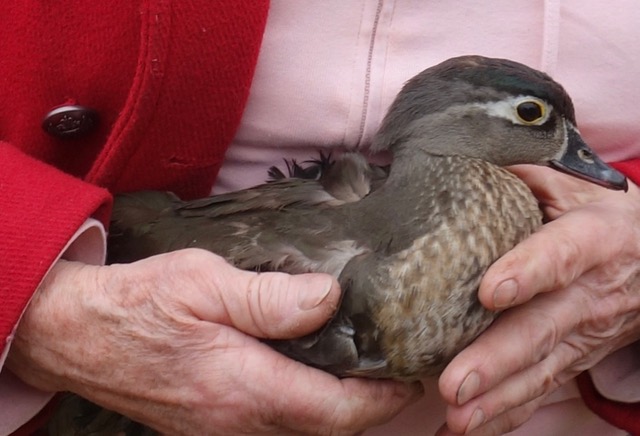
“Crash”, our female wood duck that we rescued twice from our farm house this spring where she had taken an exploration trip down the
chimney and spent a couple of days smashing dishes in the house before being returned to the pond where her mate waited
resplendent in his best mating colours.
I was thinking about her when Marjorie called”
“Alan, put the dog in the truck, we’re heading home.”
“All Set.”
“Look! LOOK!”
“WHERE?
“Over there between the ponds. Movement…”
“I see her now…and a dozen little ones all waddling in straight line like Madelaine school girls in uniform.”
“Who is she?”
“”Small duck…It’s CRASH our wood duck…looks like her”
“Twelve ducklings at least…tiny .. just hatched. a few days ago”
“I walked right by them just a few minutes ago…saw nothing.”
“Look! There they are again…all in line heading down the tractor trail. Hustling. Going somewhere.”
I wondered if maybe, just maybe, there were a few frogs bobbing under the fallen cattails…peeping
from beneath those lilly pads…HOPE SPRINGS ETERNAL.
alan skeoch
June 10,2018
Creatures common to our ponds but not so common this year. No frogs singing. Extinctions do not come suddenly … they take time, often thousands of
years in geologic time. Human beings…you and me…seem to be accelerating this Sixth extinction if it is real. Let’s hope and pray we are not the cause of our own demise.
**Note: In the last few decades, habitat loss, overexploitation, invasive organisms, pollution, toxification, and more recently climate disruption, as well as the interactions among these factors, have led to the catastrophic declines in both the numbers and sizes of populations of both common and rare vertebrate species (24⇓⇓⇓–28). For example, several species of mammals that were relatively safe one or two decades ago are now endangered. In 2016, there were only 7,000 cheetahs in existence (29) and less than 5,000 Borneo and Sumatran orangutans (Pongo pygmaeus and P. abelli, respectively) (28). Populations of African lion (Panthera leo) dropped 43% since 1993 (30), pangolin (Manisspp.) populations have been decimated (31), and populations of giraffes dropped from around 115,000 individuals thought to be conspecific in 1985, to around 97,000 representing what is now recognized to be four species (Giraffa giraffa, G. tippelskirchi, G. reticulata, and G. camelopardalis) in 2015 (32).
-
Contributed by Paul R. Ehrlich, May 23, 2017 (sent for review March 28, 2017; reviewed by Thomas E. Lovejoy and Peter H. Raven)
